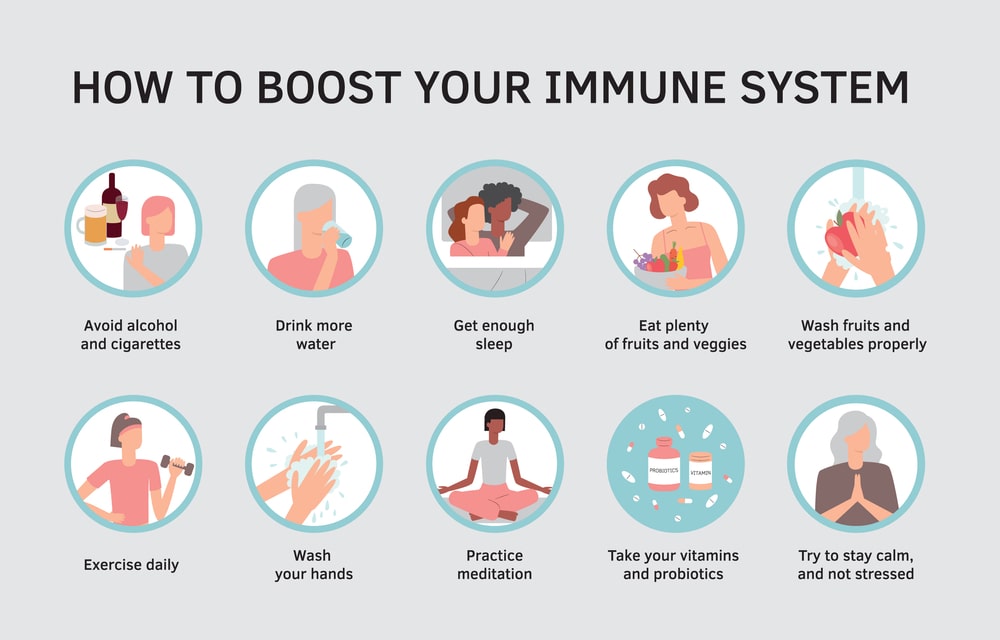Lymphocytes
Table of Contents
They are an integral part of specific immune mechanisms and are mainly formed in the bone marrow through the proliferation and differentiation of stem cells. Some stem cells also migrate to the thymus gland where they proliferate to give lymphocytes. Thus, depending upon the site of formation, they can be classified into two major types, namely, T-lymphocytes (thymus-derived) and B-lymphocytes (bone marrow-derived). Both types are found in the blood. T-lymphocytes are concerned with cellular immunity (i.e. phagocytosis) while B-lymphocytes are concerned with humoral immunity (i.e. antibody production). Under certain conditions like stress or the administration of corticosteroids, the production of lymphocytes is inhibited.
Cellular Immunity
The effector substances in cell-mediated immunity include lymphokines, interferon, and monokines. T-lymphocytes protect the tissues from intracellular diseases and cellular neoplasms. These lymphocytes are responsible for the immunity to those micro-organisms that can live and multiply within the cells of the host, e.g. tubercle bacillus, viruses, and protozoal parasites. They react directly with foreign material. This interaction leads to the production of lymphokines by lymphocytes. These lymphokines either destroy the foreign material through phagocytosis or react with receptor sites present on B-lymphocytes to induce humoral immunity. Cellular immunity (T-lymphocytes) plays an important role against bacterial, fungal, and viral infections, in transplant rejection, neoplasms, and some autoimmune processes.
Humoral Immunity
Humoral immunity involves the production of specific antibodies from B-lymphocytes upon antigenic stimulation. A small population of B-lymphocytes is specifically concerned with the retention of memory of antigens. They are known as ‘memory cells’. Re-exposure to the same antigen at a later time causes the activation of memory cells to proliferate and secrete antibodies at a much faster rate. Upon antigenic stimulation, B-lymphocytes proliferate and differentiate into protein molecules having specific antibody activity. These molecules are known as immunoglobulins (Ig) or gamma globulins. They are categorized into five major classes like:
- Immunoglobulin G
- Immunoglobulin M
- Immunoglobulin A
- Immunoglobulin D, and
- Immunoglobulin E
For every antigen, there is a specific clone of B-lymphocytes that secretes an antibody capable of neutralizing only that antigen. Since the secreted antibodies circulate throughout the body, the immune responses associated with antibody production are called ‘humoral immune responses’. The high specificity of antigen-antibody interaction is due to differences in the chemical composition of the outer surfaces of the microorganisms.
Immunoglobulins (Antibodies)
Synthesis of various immunoglobulins occurs after the primary antigenic stimulation. The antibodies are polymers of five-four-peptide subunits. They are extremely effective agglutinating agents that appear early in the response to infection.
Immunoglobulin G is the most abundant immunoglobulin synthesized during antigen activation. It contains four polypeptide chains (i.e. two heavy chains and two light chains) which are joined together by disulfide bonds. It has a molecular weight of about 150,000 daltons. These types of antibodies are found throughout the body and are effective against a large variety of antigens. Most virus antibodies and antitoxins belong to this class of immunoglobulins. Because of their ability to cross the placenta, they are effective against infections seen in new-borns.
Immunoglobulin A appears mainly in saliva, tears, nasal secretions, sweat, colostrum, and in secretions of the lungs, urinogenital and gastrointestinal tracts where it protects the surface of mucosal cells from microbial attack. In all these secretions, it appears as a dimer. Immunoglobulin D does not have any precise function. However, its role in the control of lymphocyte activation and suppression is suspected. It may serve as a lymphocyte antigen receptor.
Immunoglobulin E sensitizes the mast cells after its interaction with antigens present on the surface of mast cells. As many as 500,000 IgE receptor sites are present in each mast cell. Thus, this type of antibody is involved in the degranulation of mast cells resulting in the release of histamine, serotonin, plasma kinins, platelet-activating factor, eosinophil chemotactic factor, and slow-releasing substance of anaphylaxis, while immunoglobulin M participates in agglutinating and cytolytic reactions.
Lymph Nodes
Lymph has the same composition of salts as interstitial fluid and plasma. The lymph vessels possess numerous valves and the flow of lymph from the periphery to the thoracic duct is brought about in the same way as the flow of blood in the vein. Lymph contains a large number of lymphocytes, mainly T-lymphocytes. Particulate matter which is being collected by the lymph is brought into close contact with these lymphocytes in the lymph nodes. This results in the fixation of particulate matter with the lymphocytes.
Spleen
The slow circulation through the spleen enables macrophages to sequester and ingest the aged red cells or other foreign substances. Besides this, foreign particles are brought in close contact with lymphocytes resulting in their fixation.
Thymus
It is a ‘master’ lymphoid tissue that controls other lymphoid tissues (like lymph node and thymus). This control is mediated through the release of hormones. The thymus consists of a peripheral cortex densely packed with lymphocytes and a central medulla containing fewer lymphocytes. After adolescence, the thymus becomes less active. This results in a decrease in the effectiveness of cell-mediated immunity in old-aged persons.
Make sure you also check our other amazing Article on : What are Sexually Transmitted Diseases (STDs)?
